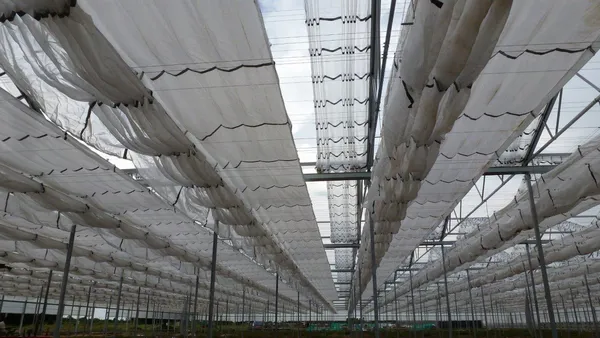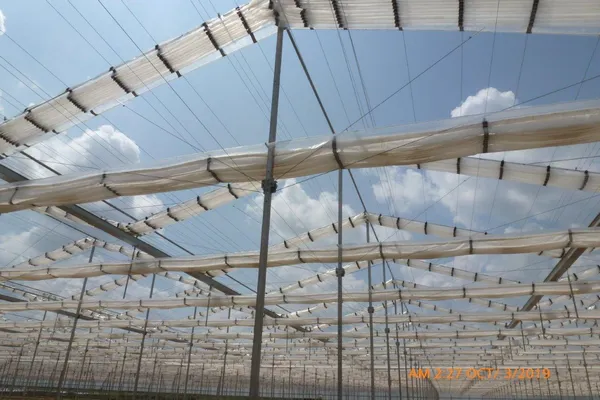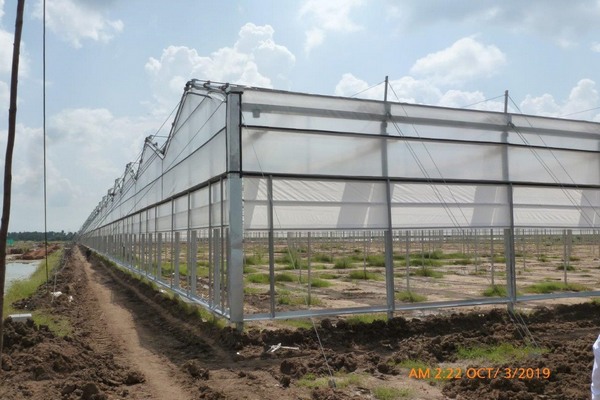Simply Fresh says that with its new investment in India, consumers will be able to enjoy fresh and safe produce that is sustainably grown locally following international standards for food safety.
Construction of phase 1 is underway which includes 8.8 hectares (22 acres) of retractable roof greenhouses and a state-of-the-art packing house which the company says will help ensure a continuous supply of fresh produce to satisfy the demand from the growing middle-class population. The facility will initially produce a) nutraceutical crops like turmeric, ginger & other medicinal herbs & b) vegetable crops like tomato, capsicum, cucumber and lettuce. Subsequent expansion will then allow for the production of berry crops like strawberries and blueberries.
This project is being led by Sachin Darbarwar, CEO of Simply Fresh. Several years ago, Sachin constructed 1.2 hectares (4 acres) of greenhouse where he grew turmeric, ginger, lettuce, tomatoes, peppers, cucumber and some berries. Response from the market convinced him that there was a significant demand for high quality produce.

Sachin was able to secure funds from Proterra Investment Partners, Mylktree & Harvest Capital. A team was put together to create a large scale project (~32 Hectares) that would allow for significant volumes of crops to be produced under one brand where a) nutraceutical and F&F companies can secure consistent supply of raw material which is fully traceable & free from prohibited substances & b) consumers could buy fresh and safe produce for their families to eat 12 months per year. To make sure that their customers have confidence in their vegetables or berries, each package will have a QR code that customers can scan to know the precise origin and journey of the produce.
According to the company, the final design selected for this project can produce crops cost effectively and sustainably year round by optimizing the growing environment by:
- Taking advantage of the natural outdoor growing environment during the late fall, winter and early spring.
- Being able to grow during the hot dry summers.
- Being able to grow during the hot and humid monsoon season when traditional cooling systems do not work efficiently.
- Growing in a completely screened environment when required.
- Using less than 5-10 Kw hours of electricity per hectare per day.
- Using minimal water for cooling.
- Harvesting rainwater to ensure a continuous supply of fresh clear water.

Simply Fresh shared the most important element of the facility design is that each of the greenhouse structures is adaptable to grow nutraceuticals, vegetables, herbs and berries so that the business is nimble and can quickly react to market changes or opportunities.
All of the greenhouses constructed are Cravo retractable peaked roof greenhouses with secondary retractable cooling curtains underneath.
All of the equipment will be controlled by an AI based computer system which has been specially designed to control retractable roofs.
In addition to the production greenhouses, a world class R&D lab, tissue culture lab and automated nursery are being constructed.
This first location will have a total of 32 hectares (80 acres) of greenhouses, phase I is expected to be completed by early next year and phase II is expected to be completed over the next 18 months making it the largest “Plant Factory” in India.

For more information:
Sachin Darbarwar
Simply Fresh India
sachin@simplyfresh.co.in
www.simplyfresh.co.in
